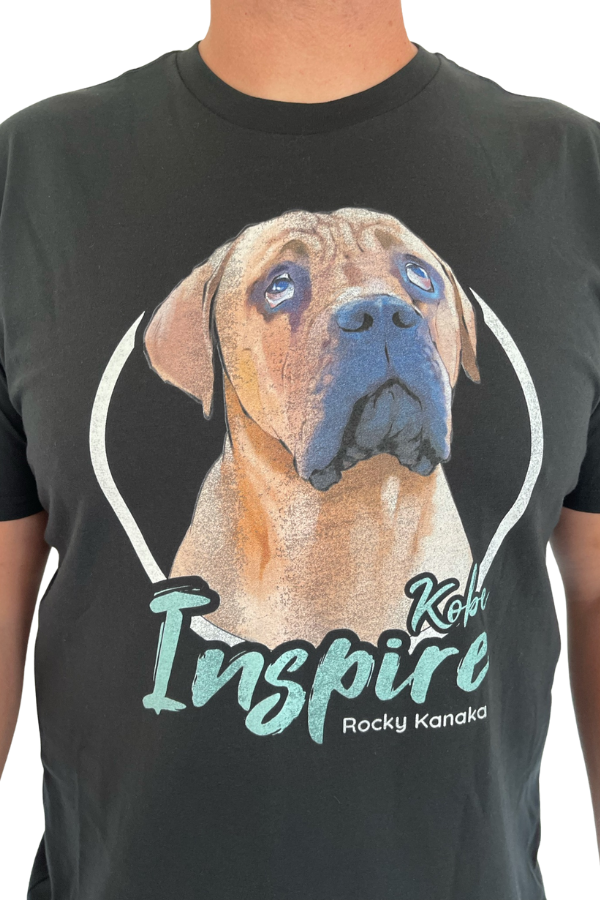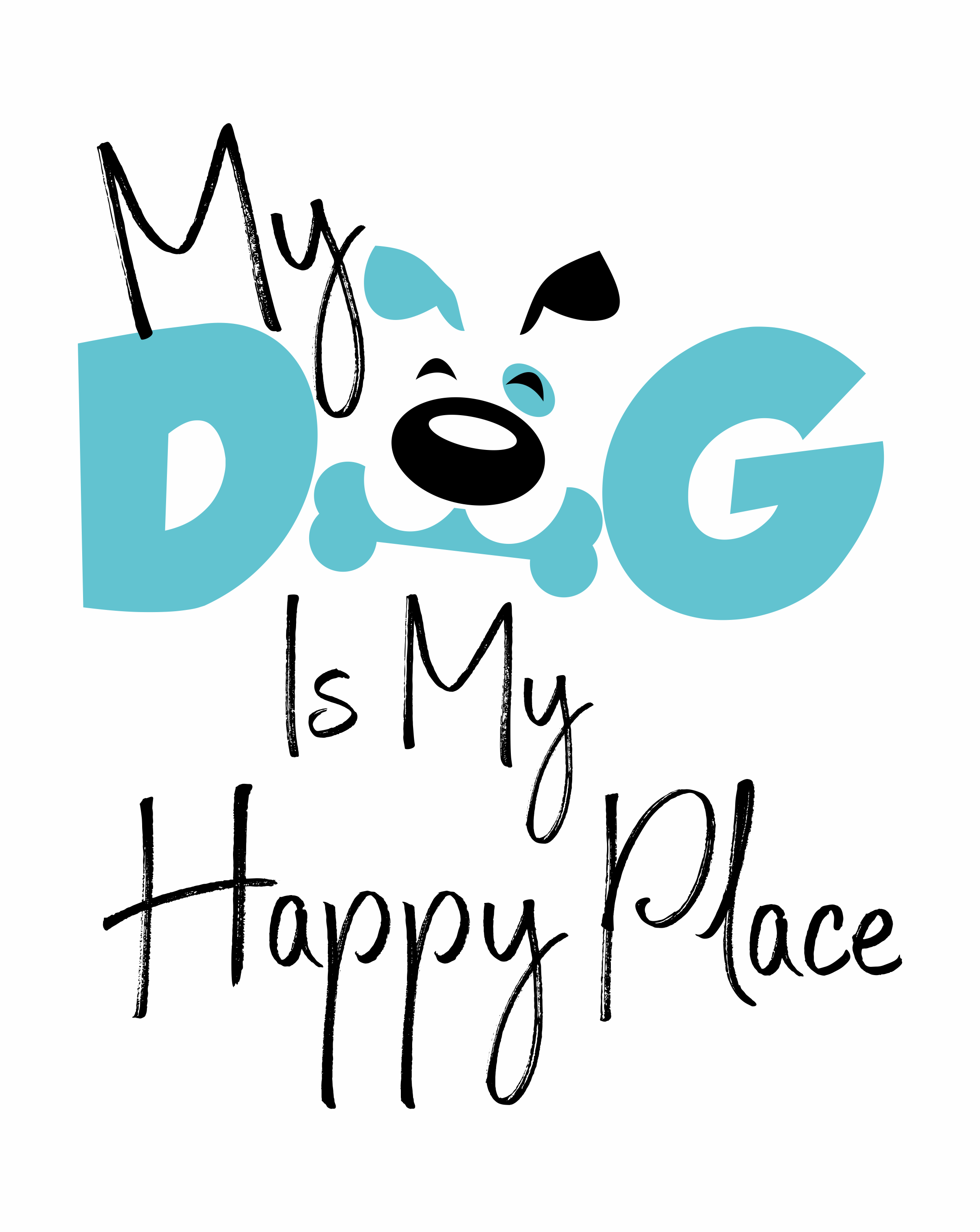Luxated Lens in Dogs: Treatment Options & Pricing
Luxated lens, or lens luxation, is a condition that affects many animals, including dogs and cats. It refers to the dislocation or displacement of the lens within the eye. This condition can be painful, lead to vision problems, and requires prompt medical attention. This article delves into the intricacies of lens luxation in dogs, its causes, symptoms, and available treatments.
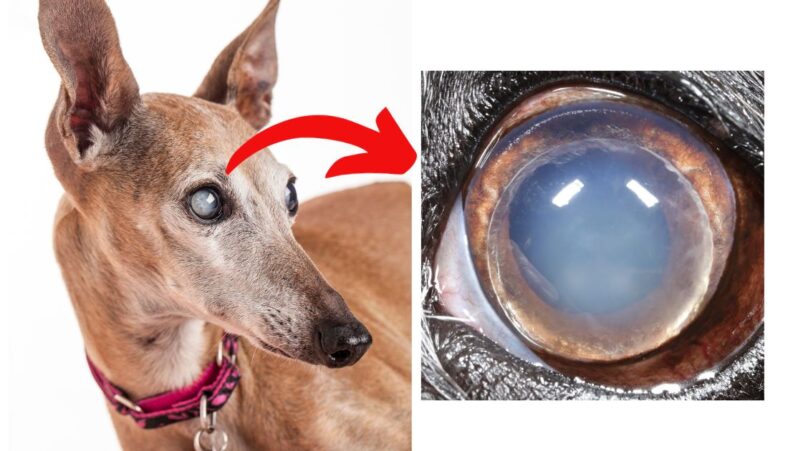
Understanding Luxated Lens in dogs
The lens of the eye plays a crucial role in focusing light onto the retina. It is held in place by tiny fibers called zonules, which anchor the lens to the ciliary body, a part of the eye. When these zonules break or weaken, the lens can become dislocated, leading to lens luxation.
There are two main types of lens luxation:
1. Anterior Lens Luxation
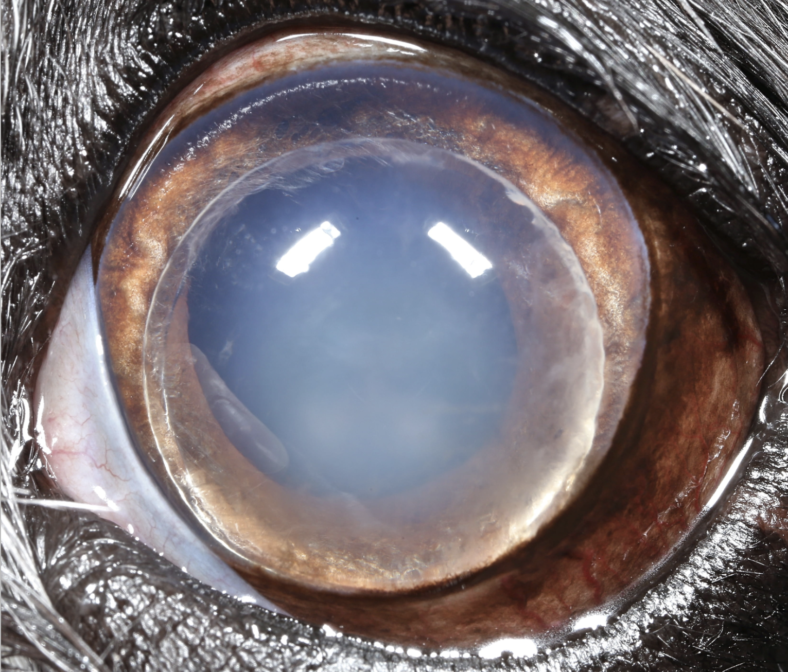
The lens moves forward into the anterior chamber of the eye.
2.Posterior Lens Luxation:
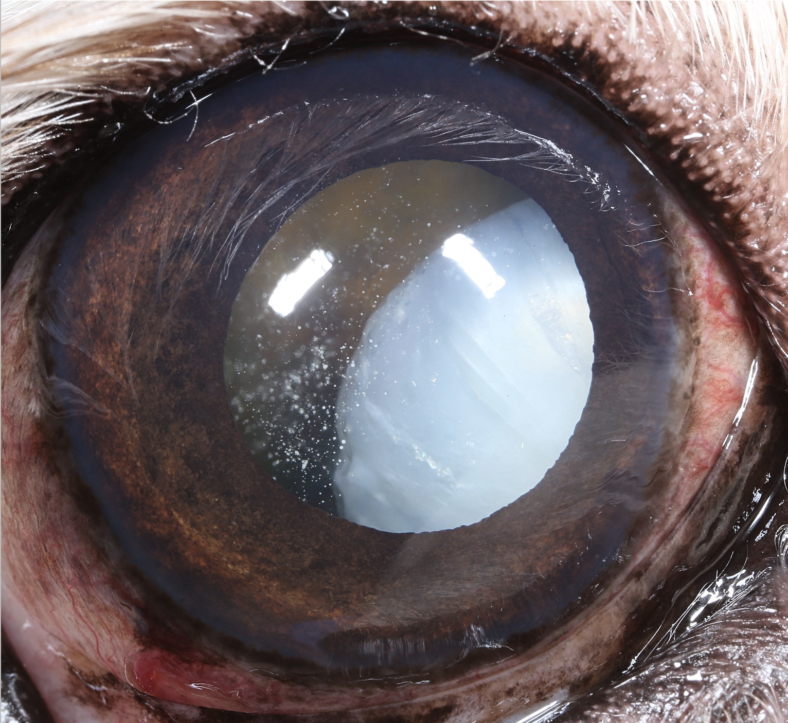
The lens shifts backward, towards the retina.
Anterior lens luxation is more common in dogs and can lead to secondary complications like glaucoma. It’s essential to address it promptly.
Before the lens completely falls out of position, it can ‘wobble’ as some of the ligaments begin to break. This is known as sub-luxation of the lens. Some veterinary ophthalmologists like to operate before the lens completely dislocates to help avoid the potentially serious complications associated with complete luxation. Your veterinarian will discuss the best approach to your pet’s condition based on examination and consultation with an ophthalmologist.” – VCA Animal Hospitals
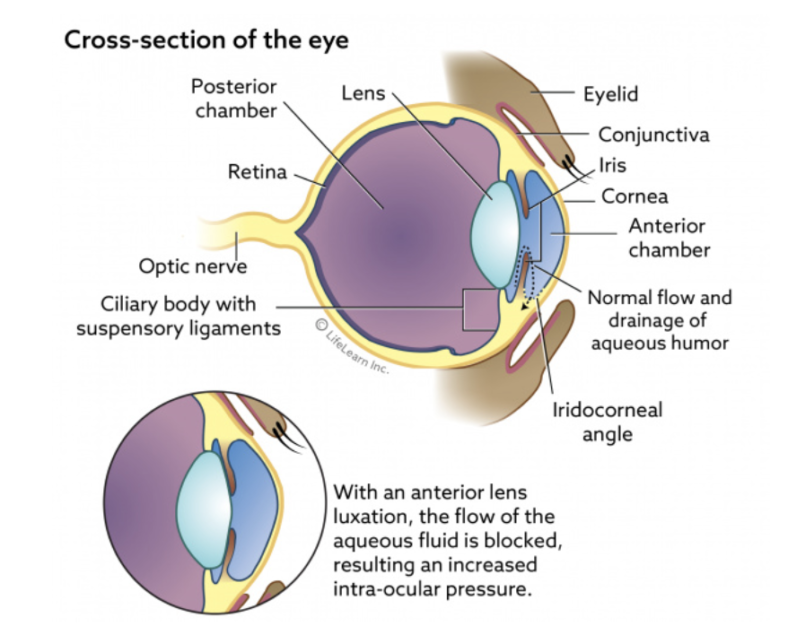
Causes and Risk Factors
While lens luxation can occur due to trauma or injury, many cases are hereditary. Certain breeds, like terrier breeds, border collies, and shar peis, are more predisposed to this condition. Secondary lens luxation can also occur as a result of other eye diseases, such as glaucoma or inflammation.
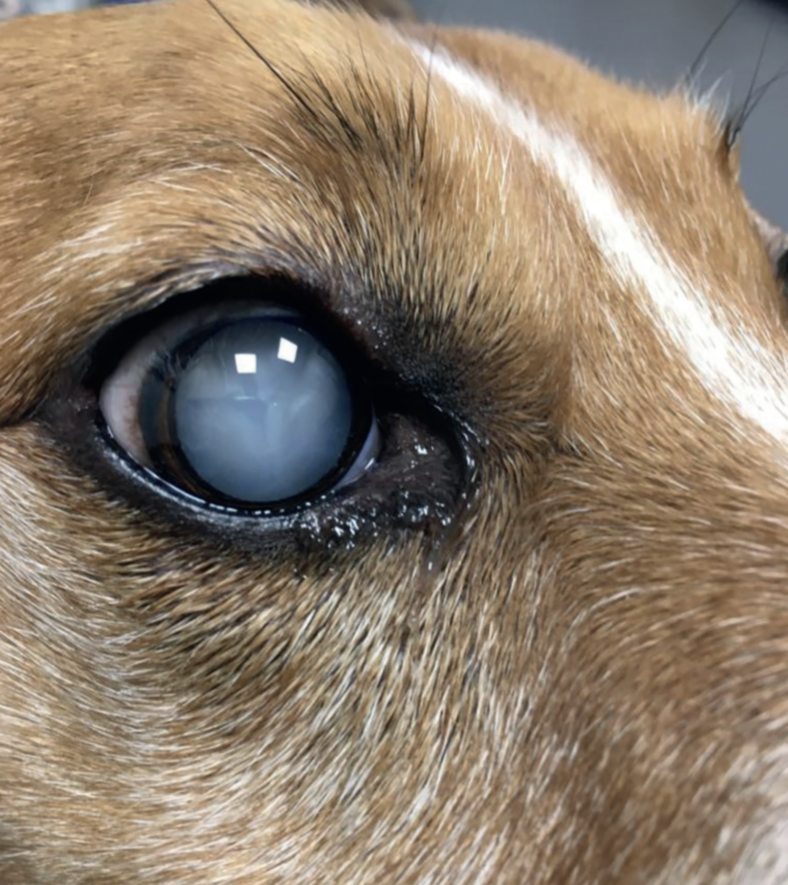
Symptoms to Watch Out For
A clear sign of lens luxation is a visible displacement of the lens. Other symptoms include:
- Pain or discomfort in the eye
- Redness or inflammation
- Cloudiness in the anterior chamber
- Difficulty in focusing light, leading to vision problems
Diagnosis and Treatment
If you suspect your dog has a luxating lens, consult a veterinary ophthalmologist immediately. They will conduct a thorough examination, which may include checking the lens capsule and the intraocular lens.
Ty’s Journey: Navigating Lens Luxation in His Senior Years
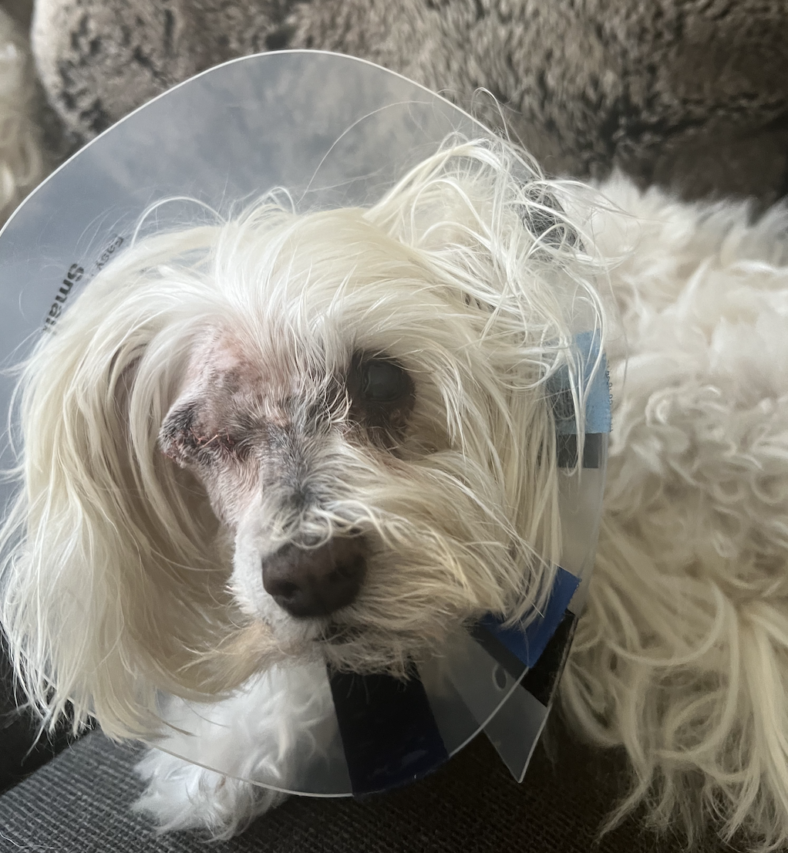
Ty, a 13-year-old Maltipoo, underwent a life-changing procedure—eye removal—due to a severe case of lens luxation. Teresa, Ty’s owner, noticed something was off with his eye just before leaving for a week-long vacation. “His eye looked unusual, so I had a family member take him to the vet,” Teresa recalls. The initial diagnosis was dry eye, and Ty was prescribed medication for treatment.
However, upon Teresa’s return, the situation had escalated dramatically. Ty’s lens had dislocated, causing increased pressure in his eye due to fluid accumulation. This not only led to discomfort but also rendered him unable to see from the affected eye.
An emergency surgery was performed in an attempt to salvage Ty’s eye, but unfortunately, it was unsuccessful. “The only option left was to remove the eye to alleviate his pain,” says Teresa.
Given that lens luxation is often a hereditary condition and can potentially affect both eyes, Teresa is now extra cautious. “I’m extremely vigilant about monitoring his remaining eye. Early detection is crucial, so if there are any signs of lens luxation developing, we can intervene promptly,” she emphasizes.
This experience serves as a poignant reminder of the importance of early diagnosis and specialized care for conditions like lens luxation, especially in breeds and age groups that are more susceptible.
Treatment Options & Cost
Treatment options vary based on the type and severity of the luxation. In cases of anteriorly luxated lenses, surgical removal of the eye is often recommended to prevent complications. The cost of lens luxation dog surgery can vary, but it’s a necessary investment for the well-being of the pet.
For posterior lens luxation, the lens may sometimes settle behind the eye, and surgical intervention might not be immediately necessary. However, monitoring is crucial.
Ty’s Difficult Choices: Navigating the Options for Lens Luxation
When Ty, the Maltipoo pictured above, faced the challenge of this severe eye condition, his veterinarian presented three potential treatment paths. Teresa, Ty’s owner, was faced with making a crucial decision for her furry companion.
- Lens Couching: This procedure involves pushing the dislocated lens to the back of the eye. It’s a delicate operation with a success rate of about 50%. The cost for this intervention was quoted at $3,500. While it might seem like a less invasive option, the success rate meant that there was a significant risk involved.
- Lens Removal: A more comprehensive approach, this surgery aims to preserve the eye by removing the problematic lens. However, it comes with its own set of challenges. Post-surgery, Ty would require lifelong medication to maintain his eye health. The cost for this procedure was notably higher, with a quote of $7,000. The lifelong commitment to medication was also a factor to consider.
- Enucleation: This is the complete removal of the affected eye. While it might sound drastic, it’s sometimes the best option to alleviate pain and prevent further complications. The procedure was quoted at $4,000.
Note: Teresa and Ty live in Southern California. Other areas of the country may be less expensive
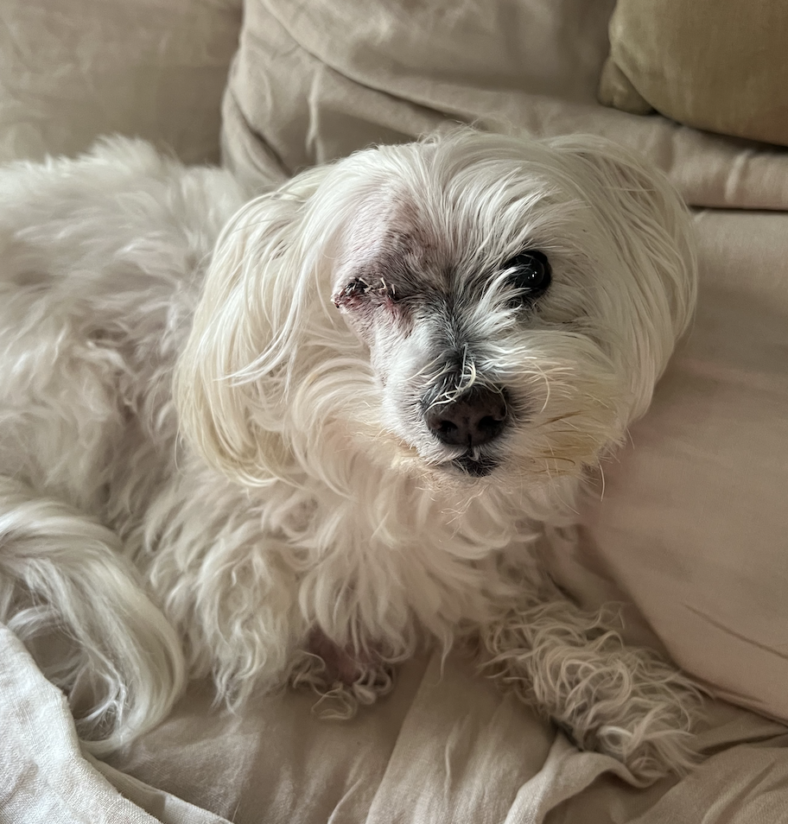
Each option presented its own set of advantages, risks, and costs. For Teresa, the decision-making process was not just about the financial implications but also about ensuring Ty’s well-being and quality of life. She opted for Lens Couching. However, the surgery was not successful and the next day the eye had to be removed.
The journey underscores the complexities pet owners often face when navigating health challenges with their pets, emphasizing the importance of understanding each option thoroughly.
Lens Luxation in Cats
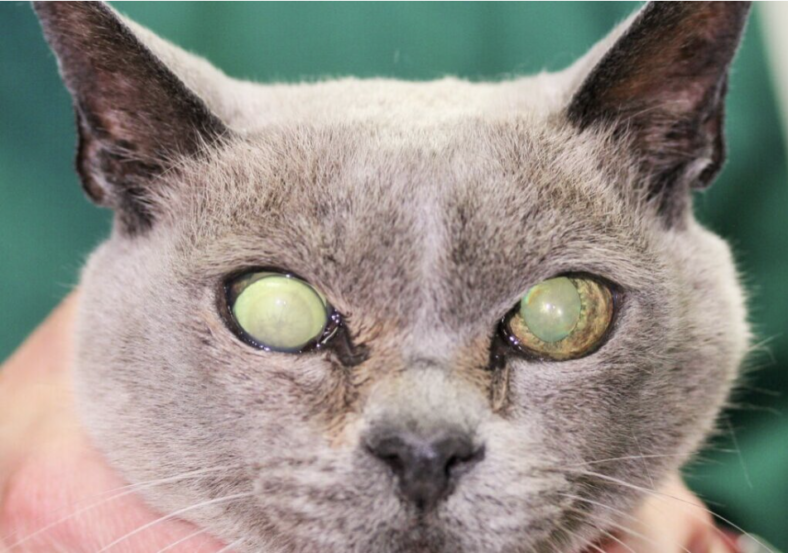
While this article primarily focuses on dogs, it’s worth noting that cats can also suffer from lens luxation. The symptoms and treatment options are similar, but the causes can differ. Trauma is a more common cause of lens luxation in cats compared to dogs.
Prevention and Aftercare
Post-surgery, it’s essential to follow the veterinarian’s instructions for aftercare. This might include administering eye drops, avoiding strenuous activity, and regular check-ups.
In breeds predisposed to lens luxation, regular eye check-ups can help in early detection. While cataract surgery can sometimes lead to lens luxation, it’s a rare complication.
Conclusion
Lens luxation, whether in dogs or cats, is a serious condition that requires immediate attention. Recognizing the signs and seeking prompt medical intervention can save your pet from pain and potential blindness. Always consult with a veterinary ophthalmologist for the best course of action.
Frequently Asked Questions (FAQs) about Lens Luxation
What is lens luxation?
Lens luxation, also known as luxated lens or dislocation of the lens, refers to the displacement or dislocation of the lens within the eye. The lens, which is responsible for focusing light onto the retina, is held in place by tiny fibers. When these fibers weaken or break, the lens can shift from its normal position, leading to lens luxation.
What causes lens luxation in dogs and cats?
There are several causes of lens luxation. It can be hereditary, with certain breeds like terriers, border collies, and shar peis being more predisposed. Trauma or injury to the eye can also lead to lens displacement. Additionally, secondary lens luxation can occur as a result of other eye diseases or conditions, such as glaucoma, inflammation, or complications from cataract surgery.
If one eye has a luxating lens, does it mean the other one will too?
Not necessarily, but the likelihood is high.
How can I tell if my pet has lens luxation?
Common symptoms of lens luxation include a visible displacement of the lens, pain or discomfort in the eye, redness, inflammation, cloudiness in the anterior chamber, and vision problems. If you notice any of these signs, it’s essential to consult a veterinary ophthalmologist immediately for a thorough examination.
What are the treatment options for lens luxation?
The treatment for lens luxation depends on the type (anterior or posterior) and severity of the condition. In many cases of anterior lens luxation, surgical removal of the lens is recommended to prevent complications like glaucoma. For posterior lens luxation, the lens may settle behind the eye, and immediate surgery might not be necessary, but monitoring is crucial. Post-surgery, pets might require eye drops and regular check-ups.
Is lens luxation preventable?
While some cases of lens luxation, especially those due to hereditary factors, might not be entirely preventable, regular eye check-ups can aid in early detection and intervention. For breeds predisposed to the condition, it’s advisable to be vigilant about any changes in their eyes. Additionally, ensuring that pets are protected from potential eye injuries can reduce the risk of trauma-induced lens luxation.
How much is luxating lens surgery?
The cost of luxating lens surgery can vary widely based on several factors, including the geographical location, the severity of the condition, the type of surgery required, and the veterinary clinic or hospital’s pricing structure. On average, the surgery can range from $1,500 to $3,500 or more. It’s essential to get a detailed estimate from the veterinary clinic or hospital before proceeding with the surgery. Some pet insurance plans might cover a portion of the surgery, so it’s worth checking with your provider.
Can I get the surgery from my normal vet or do I need to see a specialist?
While many general veterinarians are trained to handle a variety of medical conditions, lens luxation is a specialized condition that often requires the expertise of a veterinary ophthalmologist. A veterinary ophthalmologist has undergone additional training specifically in eye diseases and surgeries. It’s advisable to consult with a specialist for the best possible care and outcome for your pet. Your regular vet can provide a referral to a trusted veterinary ophthalmologist in your area.
Related articles
- 7 Serious Causes of Cloudy Eyes in Dogs
- Entropion in Dogs: Causes, Symptoms and Treatment
- Love at First Sight: Winky, the One-Eyed Wonder, Captures Hearts and Finds a New Family
- Are Dogs Color Blind?
- Dog Almost Went Blind Until This Happened


